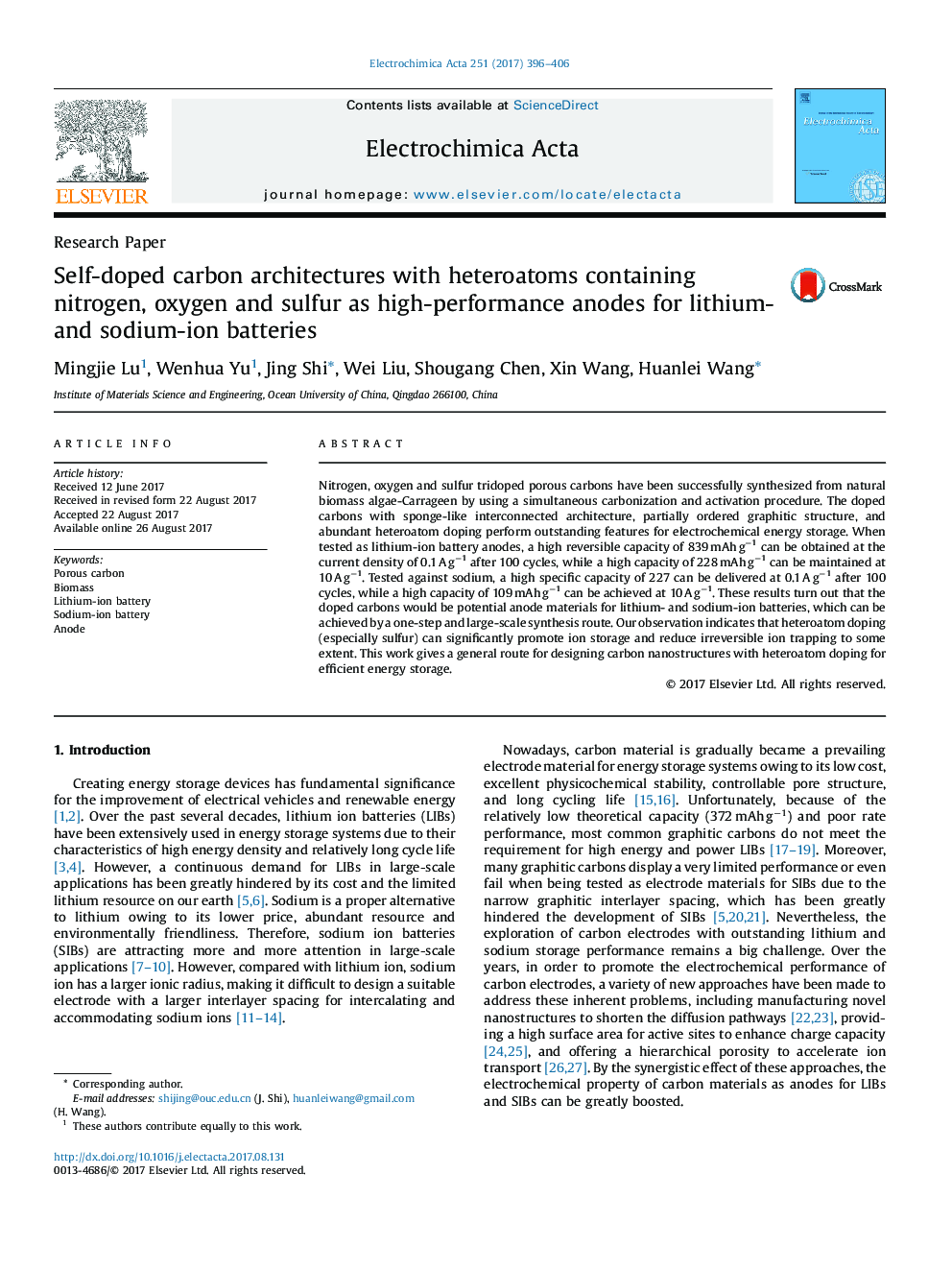| Article ID | Journal | Published Year | Pages | File Type |
|---|---|---|---|---|
| 6469937 | Electrochimica Acta | 2017 | 11 Pages |
â¢Self-doped carbon architectures with nitrogen, oxygen, and sulfur are derived from Carrageen.â¢The obtained carbon materials exhibit excellent electrochemical property.â¢The strategy provides a one-step synthesis route to design advanced anodes for batteries.
Nitrogen, oxygen and sulfur tridoped porous carbons have been successfully synthesized from natural biomass algae-Carrageen by using a simultaneous carbonization and activation procedure. The doped carbons with sponge-like interconnected architecture, partially ordered graphitic structure, and abundant heteroatom doping perform outstanding features for electrochemical energy storage. When tested as lithium-ion battery anodes, a high reversible capacity of 839 mAh gâ1 can be obtained at the current density of 0.1 A gâ1 after 100 cycles, while a high capacity of 228 mAh gâ1 can be maintained at 10 A gâ1. Tested against sodium, a high specific capacity of 227 can be delivered at 0.1 A gâ1 after 100 cycles, while a high capacity of 109 mAh gâ1 can be achieved at 10 A gâ1. These results turn out that the doped carbons would be potential anode materials for lithium- and sodium-ion batteries, which can be achieved by a one-step and large-scale synthesis route. Our observation indicates that heteroatom doping (especially sulfur) can significantly promote ion storage and reduce irreversible ion trapping to some extent. This work gives a general route for designing carbon nanostructures with heteroatom doping for efficient energy storage.
Graphical abstractDownload high-res image (144KB)Download full-size image
